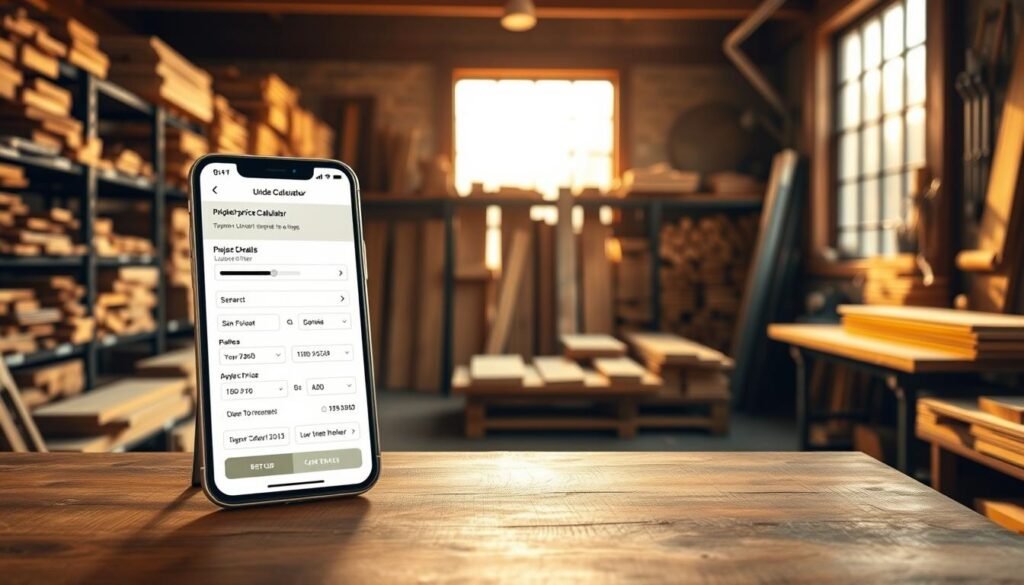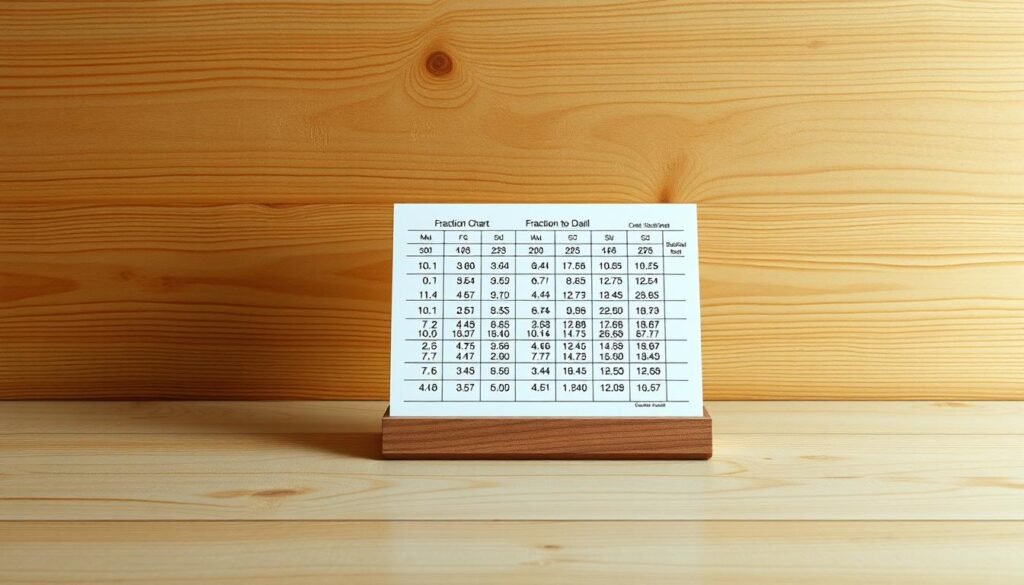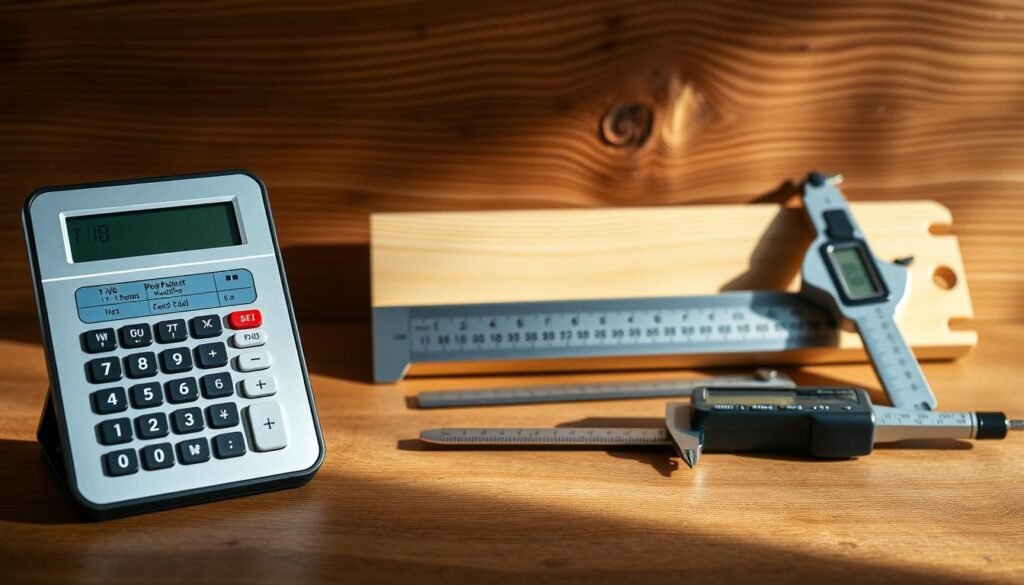Finding out the density of different wood types is key for woodworking and building. Knowing this helps in planning and doing projects better. It’s useful for wall mounts or shipping.
Our species density calculator makes this easy, giving you precise results for the wood you’re using. It helps you manage your projects better, giving you the confidence to go ahead with your plans.
With our timber weight estimator, you can quickly figure out the weight of various wood types. It’s a must-have for both professionals and hobbyists.
Understanding Wood Density and Weight Basics
Knowing about wood density is key for anyone who works with wood. It affects the weight and how long the wood lasts. Wood density is how much wood weighs in a certain space, usually in pounds per cubic foot or kilograms per cubic meter.
Each wood type has its own density, which changes its weight, strength, and how well it works. Hardwoods like oak and maple are denser than softwoods like pine and cedar. This difference is important when picking wood for a project.
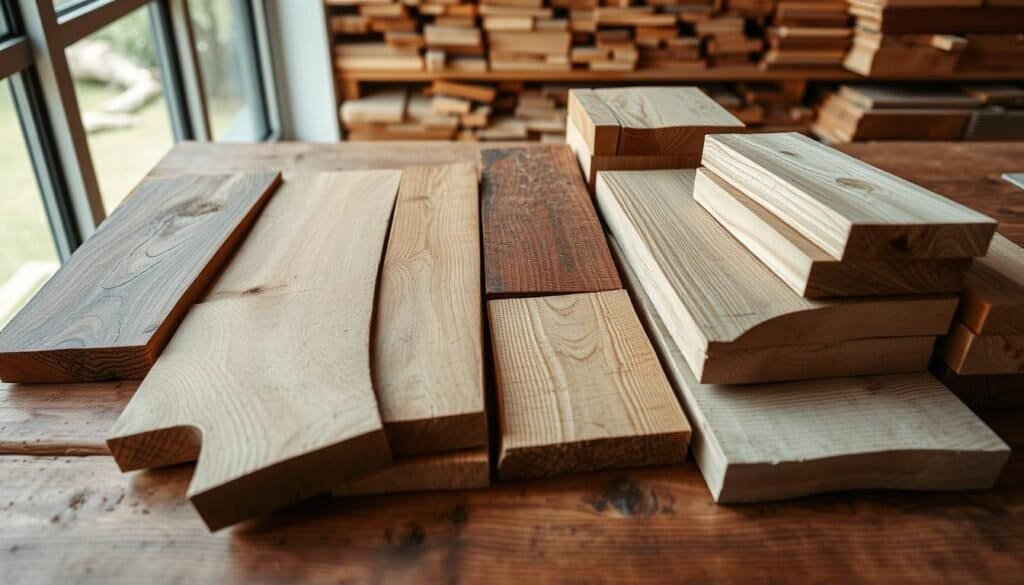
When picking wood for a project, knowing the density and weight of different types is important. A wood species color chart can show what each wood is like, including its density. For example, denser woods are stronger and less likely to warp. They’re great for flooring and making furniture.
By looking at the density and weight of different woods, woodworkers can make better choices. Whether they’re working with a sample or picking flooring, knowing these basics is essential for success.
How Wood Density Affects Your Projects
Wood density is key in determining a wood’s strength, durability, and performance. Denser woods are stronger and last longer. They’re perfect for projects needing stability and lasting quality.
For outdoor projects like decking, denser woods like oak or maple are top choices. They resist wear and tear well. Less dense woods might be better for projects needing less weight or a softer look.
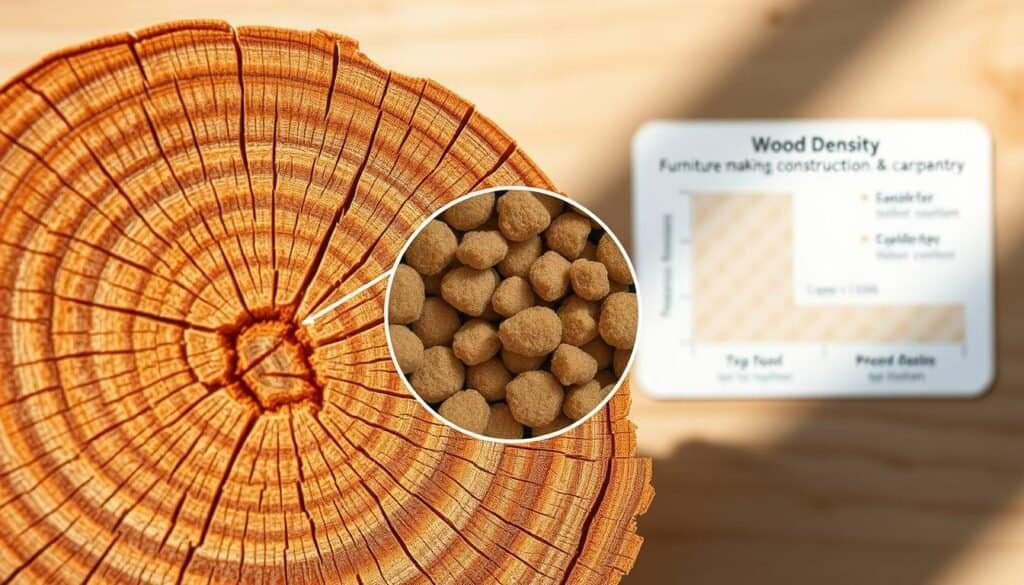
Choosing the right wood density is vital for project success. For flooring, denser hardwoods are picked for their durability and resistance to damage. Knowing how density affects your project helps you make better choices.
By looking at wood density, you can meet your project’s needs in both function and look. Whether it’s a deck or new flooring, picking the right density wood is essential for the best results.
Wood Weight Calculator: Find Density by Species
Our Wood Weight Calculator makes finding wood density easy. Just pick the wood species, and it shows you the density and weight. This info is key for planning your projects well.
Using our calculator is easy. First, choose the wood species from a big list of hardwoods and softwoods. Then, enter the wood’s dimensions and how much you have. The calculator then figures out the total weight based on the wood’s density.
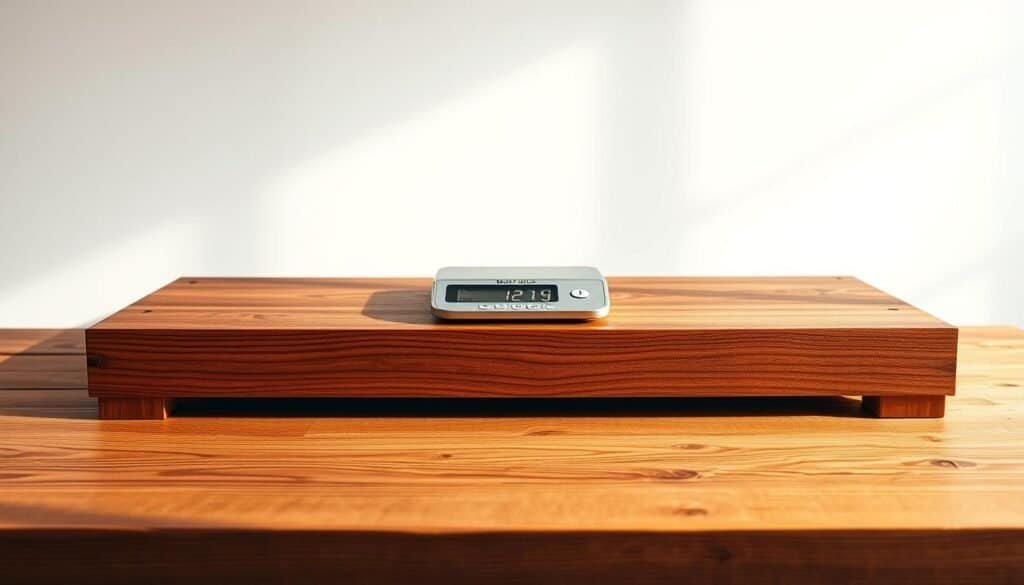
Knowing the wood’s weight is important for many uses, like building and woodworking. It helps plan how to move and store the wood. It also makes sure your structures can handle the right amount of weight, making them safer and stronger.
The species density calculator is a must-have for anyone working with wood. It takes the guesswork out of wood weight, helping you plan better. Whether you’re making furniture or a building, knowing the wood’s density is essential for success.
In short, our lumber weight calculator makes your projects better and more accurate. It gives you the density and weight of different woods, helping you plan and do your projects with confidence.
Hardwood Species Density Chart
Hardwood species vary in density, affecting their strength, durability, and look. Knowing these differences helps choose the right hardwood for your project.
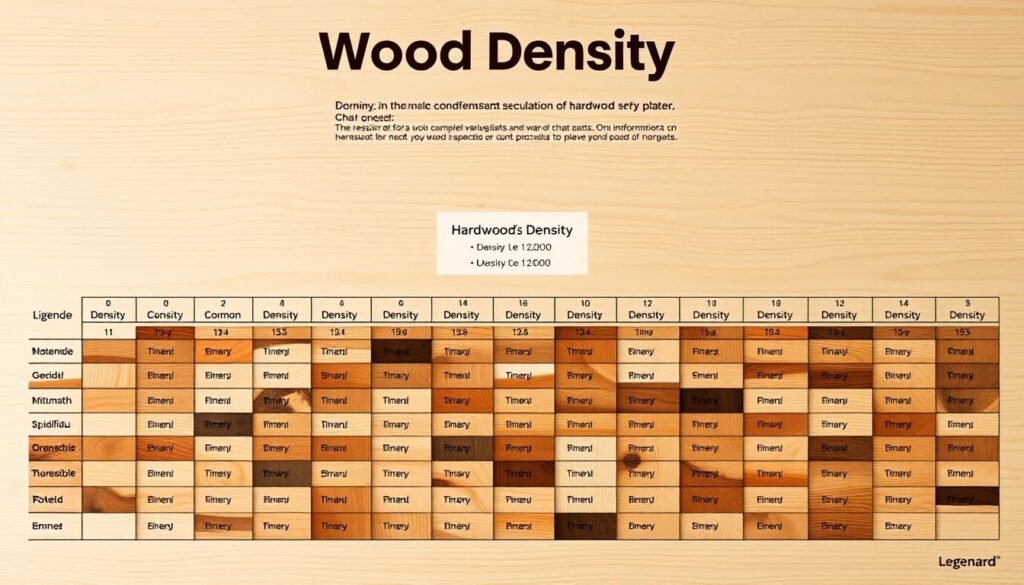
Oak, Maple, and Cherry are well-liked for their density and versatility. Oak’s density ranges from 0.7 to 1.0 g/cm³, perfect for furniture and flooring. Maple’s density is about 0.7 g/cm³, great for smooth finishes. Cherry’s density is around 0.5 g/cm³, loved for its rich color and fine grain.
Walnut, Hickory, and Ash
Walnut, Hickory, and Ash are dense hardwoods for high-end furniture and woodworking. Walnut’s density is about 0.6 g/cm³, adding luxury. Hickory’s density is around 0.8 g/cm³, known for its strength. Ash’s density is about 0.6 g/cm³, valued for its flexibility and shock resistance.
Mahogany, Teak, and Rosewood
Mahogany, Teak, and Rosewood are exotic hardwoods for their beauty and durability. Mahogany’s density is around 0.5 g/cm³, good for boat building and outdoor furniture. Teak’s density is about 0.7 g/cm³, resistant to rot and insects, perfect for outdoors. Rosewood’s density is about 0.8 g/cm³, known for its rich color, used in musical instruments and high-end furniture.
Ebony, Purpleheart, and Zebrawood
Ebony, Purpleheart, and Zebrawood are dense, exotic hardwoods for specialty projects. Ebony’s density is around 1.2 g/cm³, making it very hard and durable. Purpleheart’s density is about 0.8 g/cm³, prized for its vibrant purple color. Zebrawood’s density is about 0.7 g/cm³, known for its striped pattern, used in decorative veneers and turnings.
Understanding hardwood species density helps in making informed choices for your woodworking projects. This ensures they meet your needs for strength, durability, and appearance.
Softwood Species Density Chart
Knowing the density of softwood species is key for choosing the right material. Softwoods come from coniferous trees and are less dense than hardwoods. Yet, they have traits that make them great for many uses.
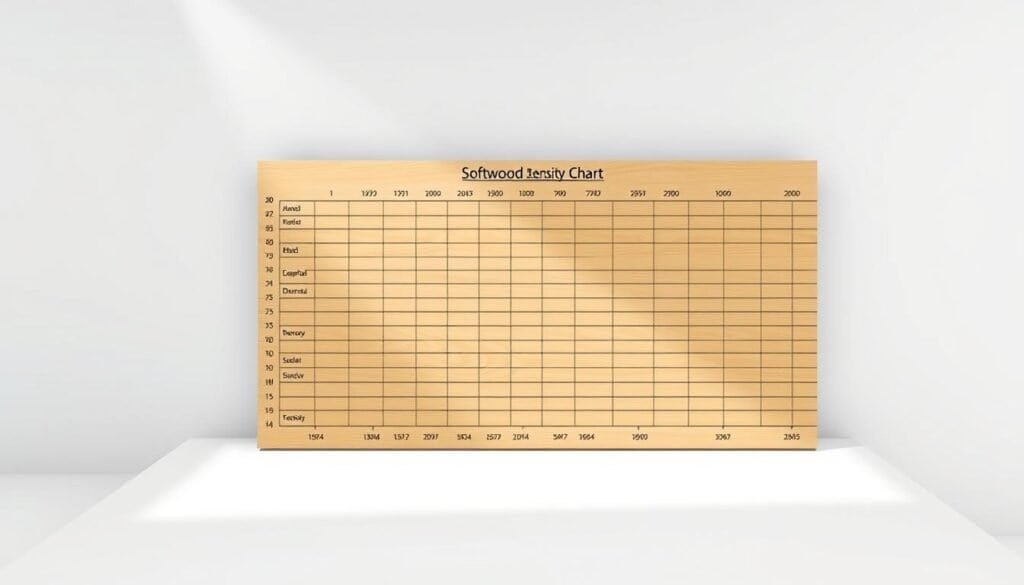
The density of softwoods varies by species. Here’s a look at some common ones and their densities:
Pine, Spruce, and Fir
Pine, spruce, and fir are top choices for softwoods. Pine wood density is between 0.35 to 0.5 g/cm³, perfect for building and making furniture. Spruce wood density is about 0.4 g/cm³, great for construction and packaging. Fir’s density is similar to spruce, making it good for the same uses.
Cedar, Redwood, and Hemlock
Cedar, redwood, and hemlock are also important softwood species. Cedar wood density is around 0.5 g/cm³, known for its durability and resistance to rot. It’s perfect for outdoor furniture and decking. Redwood density is a bit higher, at 0.55 g/cm³, also great for outdoor projects. Hemlock, with a density of about 0.5 g/cm³, is used in construction and furniture making.
Knowing these densities and traits helps you make better choices with softwoods. Whether you’re making furniture, building a deck, or working on other projects, understanding the density of your softwood is key. It can greatly affect your project’s success.
Factors Affecting Wood Weight and Density
To get the best results in woodworking, knowing what affects wood weight and density is key. This knowledge helps you make smart choices and predict how wood will behave in different projects.
Moisture content is a big factor in wood density. Wood takes in and lets out moisture, which changes its weight and density. More moisture means more weight.

The direction of wood grain also matters a lot. Wood’s properties change based on the grain direction. This affects its strength, stability, and how well it performs in a project.
Climate, soil, and sunlight where trees grow also impact wood density and weight. Even trees of the same species can have different densities based on their growing conditions.
Understanding these factors helps you predict wood’s behavior in your projects. This knowledge is vital for achieving your goals in woodworking.
Choosing the Right Wood for Your Project
There are many types of wood to choose from, and picking the right one is important. The wood you pick can change how your project looks, lasts, and works out. It’s all about finding the right fit.
Think about what your project needs. For outdoor furniture, you might want wood that resists rot and bugs, like cedar or teak. For indoor projects, you might look for wood with nice grain patterns or colors.
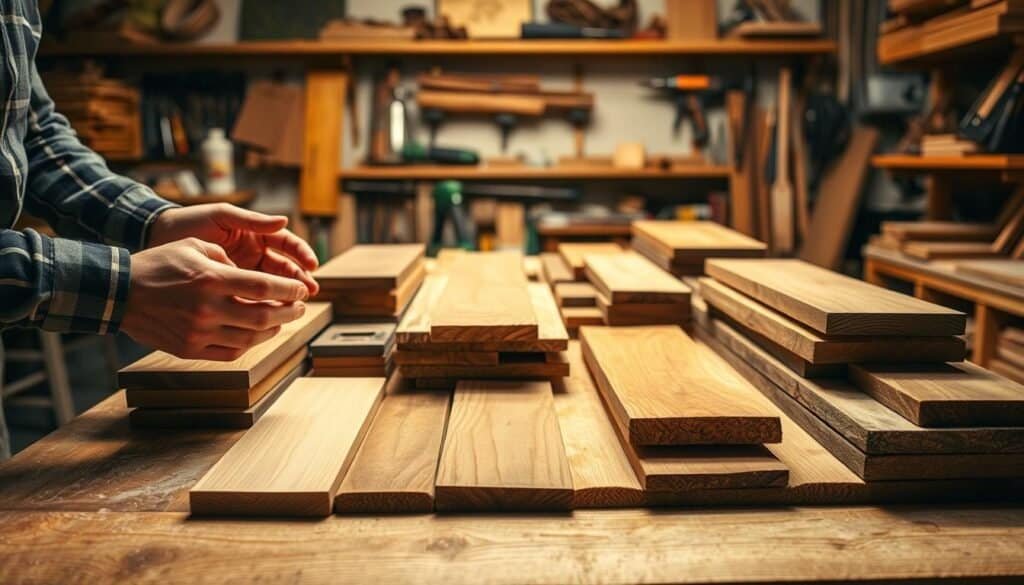
Wood density is also key. Denser woods, like hardwoods, are stronger and last longer. They’re great for projects needing stability. But, they can be harder to work with.
Softer woods, like pine or fir, are easier to handle. They’re good for projects where you need something lighter and easier to work with. Knowing the differences in wood types helps you choose the best one for your project.
Choosing the right wood is about finding the balance between what your project needs and what different woods offer. Look at factors like density, strength, durability, and looks. This way, you can make a choice that will make your project a success.
Working with Different Wood Densities
Different wood densities bring their own set of challenges and opportunities for woodworkers. It’s important to know how to work with these differences to get top-notch results.
One big challenge is the difference in workability. Harder woods, like hardwoods, are harder to cut and shape than softer woods. You’ll need sharper tools and different techniques to avoid damaging the wood.
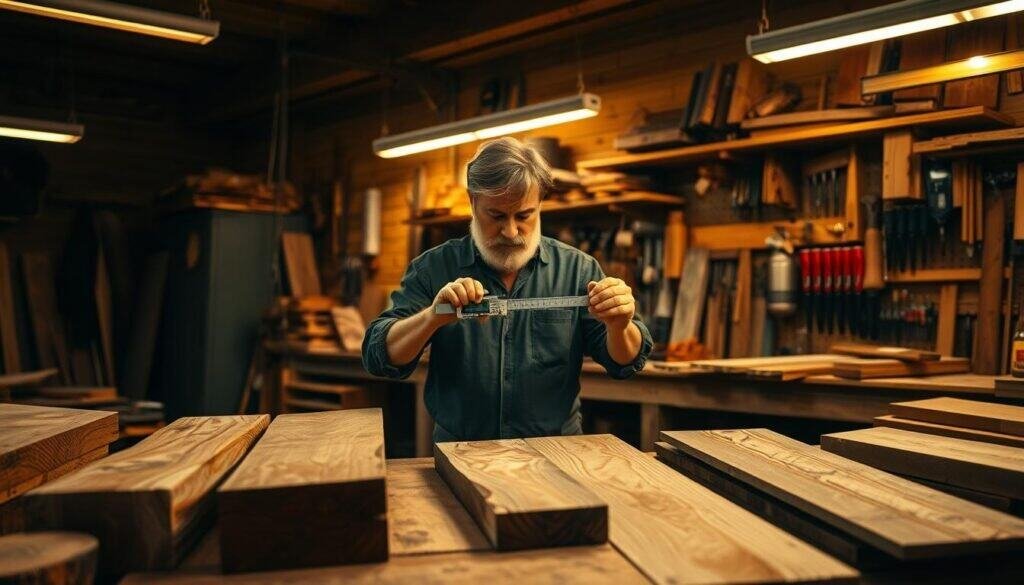
For example, when working with hardwoods like oak or maple, sharp blades are essential. These woods are dense and can dull tools quickly. Softer woods, like pine, might need less sharp tools but can splinter easily, requiring a different approach.
Finishing techniques also change with wood density. Harder woods take finishes better, leading to a smoother finish. Softer woods need more prep, like filling pores or using a primer, to get a similar look.
By understanding wood density differences and adjusting your techniques, you can overcome these challenges. This not only boosts your skills but also helps you get consistent, high-quality results in all your projects.
Specialty and Reclaimed Wood Considerations
Specialty and reclaimed woods add special touches to woodworking projects. They make projects more sustainable and beautiful. Woodworkers can make unique pieces that show off their skills and help the environment.
When working with these woods, their uneven densities are key. Unlike regular lumber, they can be heavier or lighter in spots. It’s important to understand and work with these differences to get the best results.
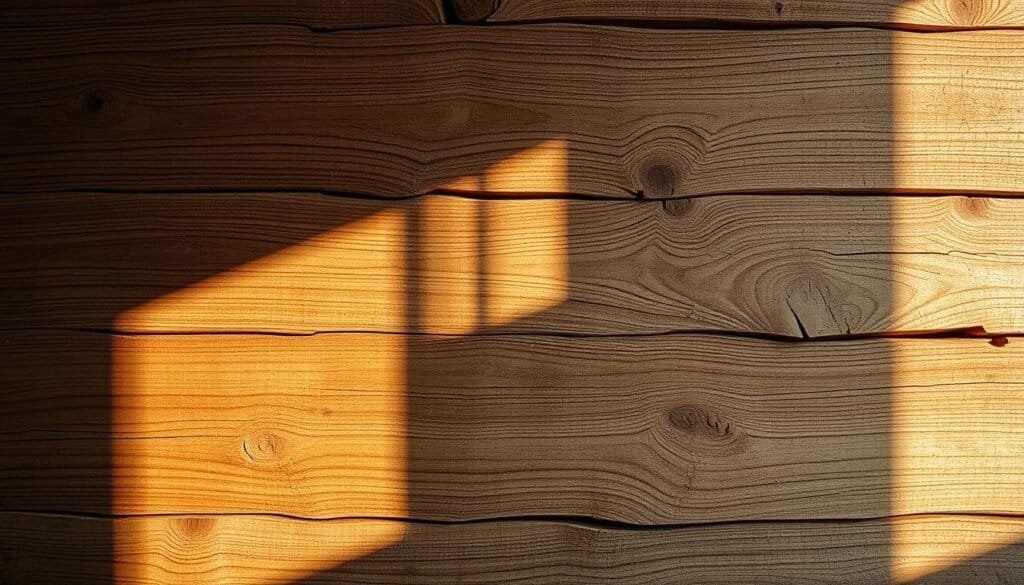
It’s also important to think about sustainability. Reclaimed wood helps reduce waste by using old materials. When choosing specialty woods, make sure they are harvested in a way that’s good for the planet.
Using specialty and reclaimed woods can make projects truly special. With careful planning, woodworkers can create pieces that are not only beautiful but also good for the environment.
Conclusion
Knowing about wood density and weight is key for your woodworking and building projects. Our Wood Weight Calculator helps you make smart choices. This way, your projects will meet your high standards of quality and durability.
Density and weight are very important. They affect how strong and good-looking your finished product will be. By thinking about these, you can pick the best wood for your project and work with confidence.
In short, our wood weight calculator makes finding wood density and weight easy. With what you learn from this article, you’ll be ready to take on your projects. You’ll get results that look professional.

